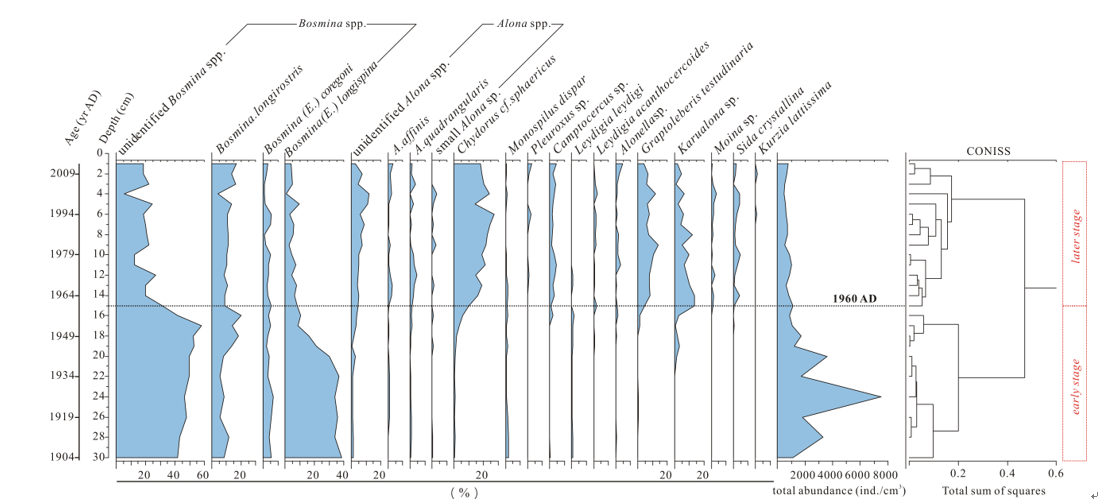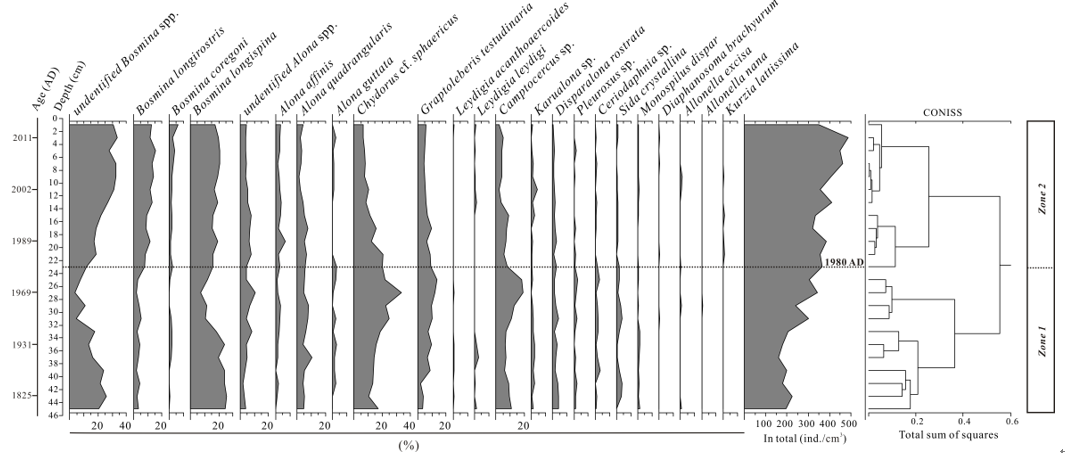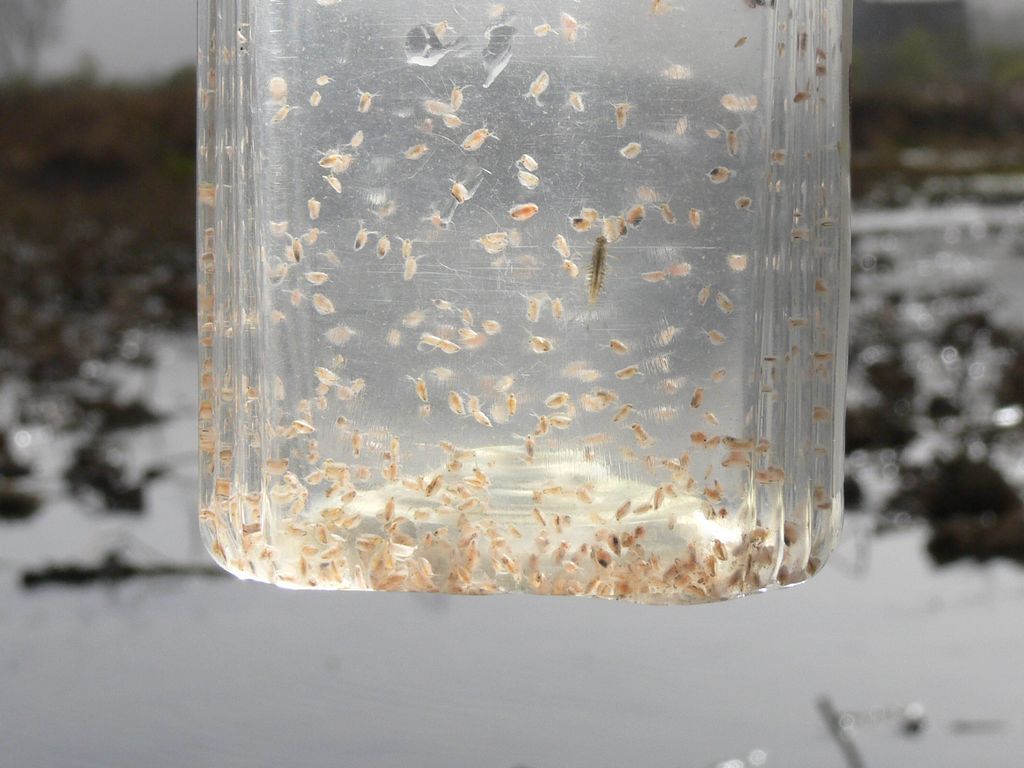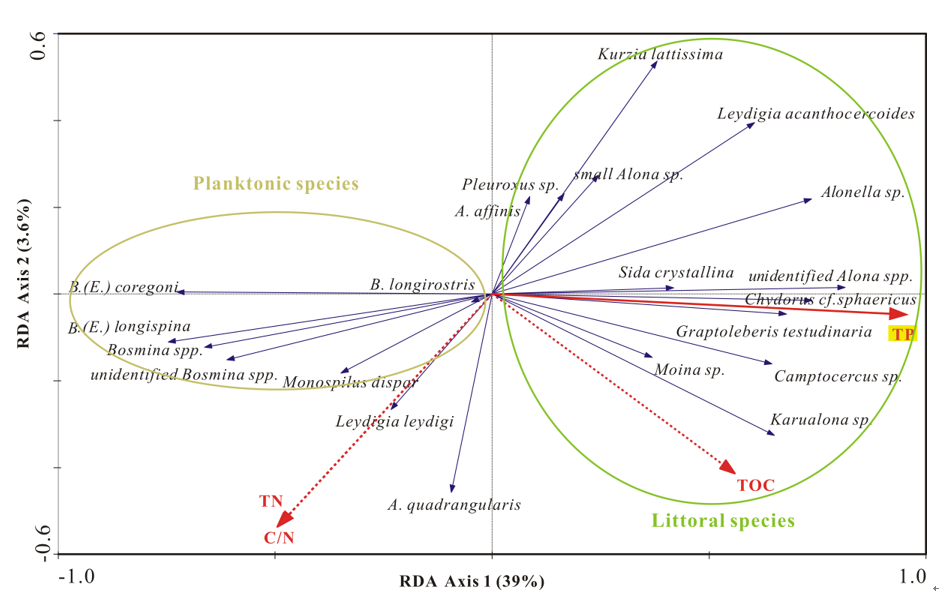Advances in the study of Cladocera fauna and its responses to the evolution of ecological environment in shallow freshwater lakes
As one of the dominant lacustrine zooplankton, Cladocera are sensitive to changes in a wide range of environmental variables, such as trophic state, temperature, salinity, pH, and water level. After the death of Cladocera, its chitin remains fall to the bottom of the lake and are preserved in the sediments, which can record changeable information of lake environment.
East Taihu Lake—located at the south-eastern side of the lake—has different ecologically characteristics to the other lake areas. East Taihu Lake is dominated by large areas of aquatic plants and the water is stagnant for prolonged periods of time. However, in recent years, with increasing anthropogenic pressures, East Taihu Lake has been facing the threat of deterioration of the water environment, such as exacerbated eutrophication and swampiness. The environmental changes observed in East Taihu Lake vary significantly which dramatic impact on the composition of zooplankton in the lake. Shengjin Lake is a typical Yangtze River-connected lake, that is also a national nature reserve and a Wetland of International Importance. However, the ecological environment of Shengjin Lake has also changed significantly due to the common influence of Yangtze River and human activities in recent decades.
With the support of National Key Research and Development Program of China, National Natural Science Foundation of China (NSFC) and National Basic Science and Technology Special Project, Dr. Cheng Longjuan, from the research team of Prof. Xue Bin in Nanjing Institute of geography and lakes, Chinese Academy of Sciences, revealed the cladoceran composition characteristics of East Taihu Lake and Shengjin Lake for hundreds of years. Based on the novelbiological indicator (subfossil cladoceran), the geochemical indicators (LOI, TOC, δ13Corg, TP and TN), and the 210Pb and 137Cs data, she reconstructed the response processes of cladoceran composition to evolutions of the ecological environment in the two lakes.
Detailly, the results of East Taihu Lake showed the decreasing abundances of subfossil Bosminidae and increases inlittoral cladoceran species (Chydorus cf. sphaericus and Graptoleberis testudinaria) after the 1960s (Fig. 1). Redundancy analysis (RDA) and Pearson correlation analysis identified significant correlations between total phosphorus (TP) and Bosmina spp. (total), B. (E.) longispina, and Chydorus cf. sphaericus (correlation coefficients: -0.720 (P<0.01), -0.646, and 0.667 (P<0.05), respectively) (Fig. 2).These anthropogenic pressures (the introduction of land reclamation for fish and crab farming since 1960s) exacerbated eutrophication, whichled to the rapid growth of submerged vegetation and subsequently altered the zooplankton assemblage (Fig. 3).
The results of Shengjin Lake showed that there was a healthy ecological environment with low nutrient levels in Shengjin Lake before the 1980s. However, the increasing levels of the eutrophic species B. longirostris, nutrients (TN and TP) and organic matters (LOI and TOC), and the decreasing δ13Corg in recent decades indicated that the trophic state of Shengjin Lake has increased since the 1980s (Fig. 4). This corresponded with increasing anthropogenic effects, including land reclamation, chemical fertilizer application, and sluice construction. In addition, the droppings of water birds also promoted increases in nutrient and organic matters levels in Shengjin Lake.
These researches further deepen the understanding of the relationship between the zooplankton Cladocera community and the ecological environment in the freshwater lakes. The research papers have recently been published in the journals of Catena and Quaternary International.
Refer to https://www.sciencedirect.com/science/article/pii/S0341816219305880?via%3Dihub and https://www.sciencedirect.com/science/article/pii/S1040618219308973?via%3Dihub

Fig. 1. Abundance and assemblages of subfossil cladocerans identified in TH-5 core, from the East Taihu Lake
Fig.2. Redundancy analysis (RDA) ordination among the geochemical indices with the dominant species.

Fig. 3. The changes of P/L (ln), submerged plant biomass and East Taihu Lake area



